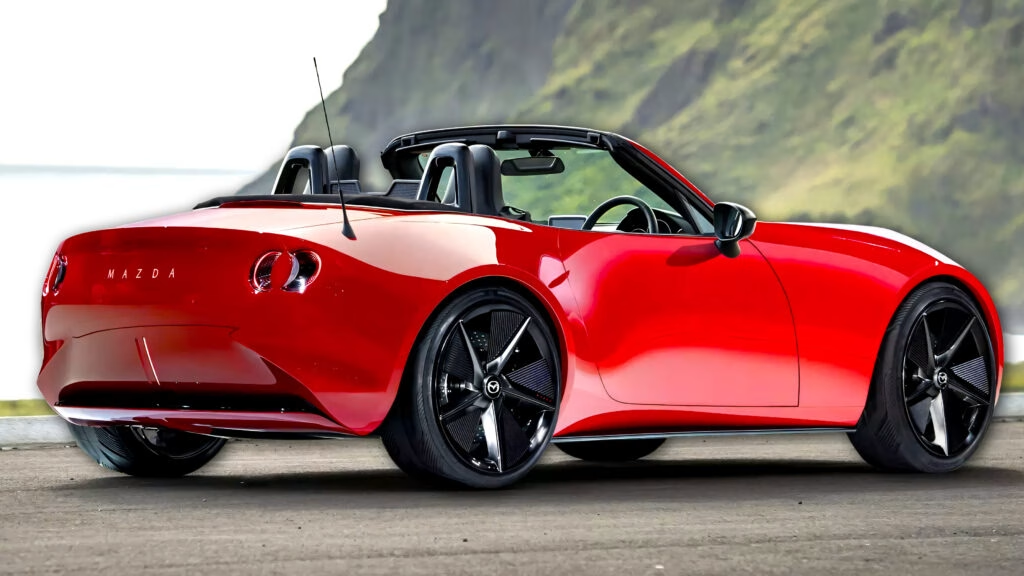What’s Really Changing in Mazda’s Lineup Over the Next Few Years?
Mazda isn’t rushing headlong into the electric future, but it’s not dragging its feet either. Instead, the company is threading the needle—rolling out hybrids, prepping for EVs, and keeping its core models fresh. If you’re wondering what this means for your next crossover, sedan, or even sports car, here’s what’s actually in the pipeline and why it matters.
Why Is Mazda Betting Big on Hybrid SUVs Like the CX-5 and CX-50?
Let’s get right to the heart of it: Mazda’s best-selling CX-5 is getting a major update, and the headline isn’t just a sleeker look. The real news is the in-house hybrid powertrain coming in 2027. This isn’t a rebadged Toyota system—it’s Mazda’s own tech, built around a new 2.5-liter SkyActiv-Z engine. The goal? To meet shifting consumer preferences and regulatory pressures without alienating drivers who aren’t ready to go full electric.
Mazda expects to sell a combined 250,000 units of the hybrid CX-5 and CX-50 annually in the US. That’s a bold target, especially with the Toyota RAV4 Hybrid dominating the segment. But Mazda’s strategy is nuanced: offer two compact hybrids that feel distinct enough to appeal to different buyers. The CX-5 leans into urban sophistication, while the CX-50 is more rugged and outdoorsy. It’s a bit like having your cake and eating it too—if you’re into crossovers, anyway.
How Are Sales Trends and Tariffs Shaping Mazda’s Decisions?
Global sales for Mazda hit 636,968 units in the first half of 2025, a modest 2.6% bump from last year. The US remains the brand’s biggest market, with 210,297 vehicles sold (up 3.9%). But there’s turbulence elsewhere: sales are down 12.2% in Europe and 18.7% in China. That’s not pocket change.
Why does this matter? Because Mazda has revised its US sales target for 2025 from 450,000 units downward, citing the uncertainty around tariffs and shifting market winds. Pricing for imported models hasn’t changed yet, but the company is watching closely. For buyers, this means Mazda is likely to keep value and availability top of mind—at least for now.
Which Models Are Getting Major Updates, and When?
If you’re eyeing a new Mazda in the next few years, here’s the rundown:
– CX-5: Gasoline version lands in 2026, hybrid follows in 2027.
– CX-50: Already available, with a hybrid option using Toyota tech. A full redesign could arrive by 2030.
– CX-30: Minor updates until a new generation debuts in 2029.
– CX-70 and CX-90: Expect mild facelifts in 2026, with new generations after 2030.
– Mazda3: The current model (hatch or sedan) sticks around until at least 2032, with a full refresh likely in the early 2030s.
Mazda’s approach is to keep its bread-and-butter models relevant while gradually layering in electrification. No sudden moves, just steady evolution.
When Will Mazda’s First In-House Electric Vehicle Arrive?
Mazda’s first fully in-house EV is scheduled for a 2027 launch, with US availability likely in 2028. Details are still hush-hush, but it’s expected to be a crossover—no surprise there, given market demand. Meanwhile, the Mazda6e sedan and CX-6e SUV, built through Chinese joint ventures, will launch in Europe and Australia sooner.
Mazda’s EV strategy is cautious but calculated. The company is waiting for battery tech, charging infrastructure, and consumer sentiment to catch up before going all-in. According to a 2024 report from the International Energy Agency, global EV sales are expected to reach 17 million units this year, but adoption rates vary wildly by region. Mazda seems determined not to get ahead of its customers.
Are Sports Cars Still Part of Mazda’s DNA?
For enthusiasts, here’s the juicy bit: Mazda isn’t abandoning its sporty roots. Two new sports cars are in development, both aiming to rekindle the magic of the RX-7 and MX-5.
First, there’s the production version of the Iconic SP Concept—a low-slung coupe with a rotary range-extender electric powertrain. Some reports suggest we’ll see it as early as next year, while others peg the debut for 2028. Either way, this isn’t just nostalgia—it’s Mazda betting that there’s still a market for affordable, innovative sports cars.
Then there’s the next-gen MX-5, expected around 2029. Mazda’s keeping the formula simple: a lightweight roadster with a four-cylinder gasoline engine, tuned for agility and fun. No EV gimmicks, just pure driving joy. It’s a nod to the purists, and frankly, a breath of fresh air in an industry obsessed with screens and software.
What’s Mazda’s Endgame—And What Should Buyers Watch For?
Mazda’s future isn’t about chasing headlines or making splashy promises. Instead, the company is playing the long game: hybrids now, EVs when the time is right, and sports cars that stay true to their roots. This strategy might not grab as much attention as some rivals, but it’s grounded in what real drivers actually want—reliability, value, and a bit of fun behind the wheel.
The big takeaway? Mazda’s next chapter isn’t about perfection—it’s about smarter adjustments. Start with one change this week, and you’ll likely spot the difference by month’s end.

